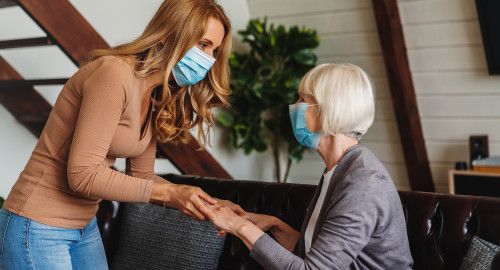Understanding the science of laughter
In your daily life, don’t forget to laugh. After all, it’s good for you — no joke. Humor can lighten the anxiety and stress load that comes with living during a pandemic, or just life in general. Having a good sense of humor is an excellent way to relieve stress and anxiety and bring back a sense of normalcy, especially during the turbulent times of these past few years.
Let’s explore the science of laughter
“Amusement and pleasant surprises — and the laughter they can trigger — add texture to the fabric of daily life,” says Janet Gibson, author and professor of cognitive psychology at Grinnell College. Beyond that, laughter has many powers that can enhance our physical and mental well-being:
- Physical power by activating neural pathways of emotions like joy and laughter to improve your mood, physical, and emotional response
- Cognitive power by recognizing and resolving the absurdity of a surprising behavior or event, such as seeing the lighter side of things
- Social power by creating bonds and increasing intimacy with others
- Mental power by producing positive emotions that lead to living meaningful lives and thriving
Next, let’s focus on the social power of laughter, and the bonds and increased intimacy it creates with others.
Laughing is contagious. The most common human social signals are laughing, smiling, and talking. Years ago, psychologists from the University of Maryland Baltimore County (UMBC) found that laughter is 30 times more likely to occur in the company of others than when one is alone. Recently, the Greater Good Science Center (GGSC) at the University of California, Berkeley explored the connection between social connection and happiness. They referenced several studies exploring people’s strategies for happiness, and they found a main common denominator — social connections do lead to happiness.
This ties in perfectly to the Right Tribe, one of the Blue Zones Project’s Power 9® principles. Find your people — those who support your positive healthy behaviors — like being social and laughing more. Take inventory of who you hang out with and do your best to proactively surround yourself with the right family and friends. Here are some examples of laughter, social interaction, and positive healthy behaviors:
- If you want to eat healthier, commit to following the Plant Slant rule with a friend. Adopt a meatless Monday and share recipes
- If you want to be more physically active, commit to the Move Naturally rule by joining a Walking Moai. It’s a group of people who walk together at least once a week to points of interest throughout the community
- If you want to laugh more, find what movies, books, television shows, etc. make you laugh and share them with others. They may also enjoy a laugh, too, and share something back
- If you want to go to a community volunteer event, but you don’t want to sign up alone, bring a friend and volunteer together
Here in Monterey County, there are plenty of ways to connect and laugh more. Head over to the Blue Zones Project — Monterey County’s website or Facebook page for a full schedule of their monthly events. Get involved with your church. Attend a community volunteer event. If you need resources, an Aspire Advocate or health coach can assist you. Check out local clubs and social resources.
H8764_MKT_CHLaughter_0522_C










